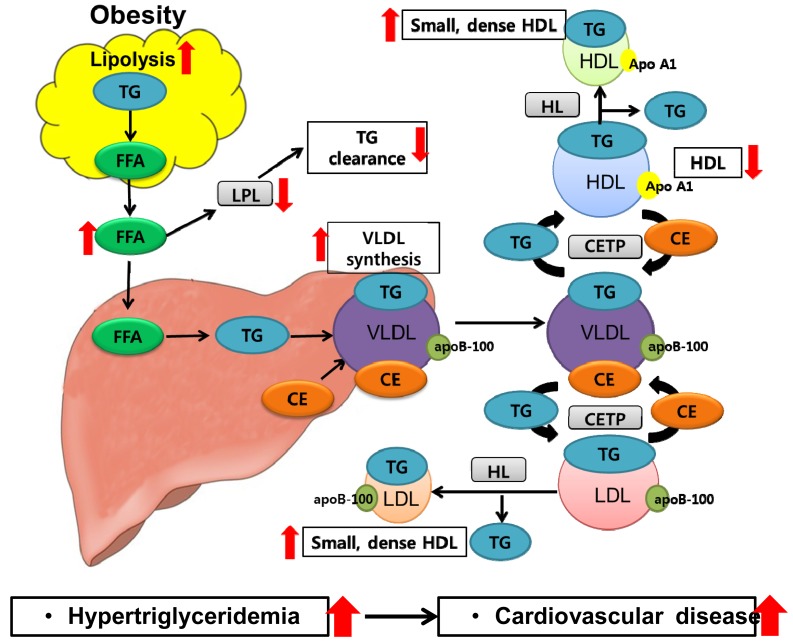Figure 4.
Mechanisms of dyslipidemia in obesity. An increased free fatty acids (FFA) release from adipose tissue via lipolysis can result in enhanced delivery of FFA to the liver. The enhanced FFA leads to increased triglyceride (TG) and very-low-density lipoprotein (VLDL) production in the liver as well as inhibition of lipoprotein lipase in adipose tissue and skeletal muscle, thereby promoting hypertriglyceridemia. Moreover, the increased VLDL in the liver can inhibit lipolysis of chylomicrons, which also contributes to hypertriglyceridemia. The TG in VLDL is exchanged for cholesteryl esters from low-density lipoproteins (LDL) and high-density lipoproteins (HDL) by the cholesteryl ester transport protein, producing TG-rich LDL and HDL. The TG in the LDL and HDL is then hydrolyzed by hepatic lipase, producing both small, dense LDL and HDL. The decreased HDL concentration and formation of small, dense LDL particules are linked to a higher risk of cardiovascular disease. The red arrows indicate increased (when pointing upward) or decreased (when pointing downward) responses to obesity. CE, cholesteryl esters; CETP, cholesteryl ester transport protein; FFA, free fatty acids; HDL, high-density lipoproteins; HL, hepatic lipase; LDL, low-density lipoproteins; LPL, lipoprotein lipase; TG, triglyceride; VLDL, very-low-density lipoprotein.

